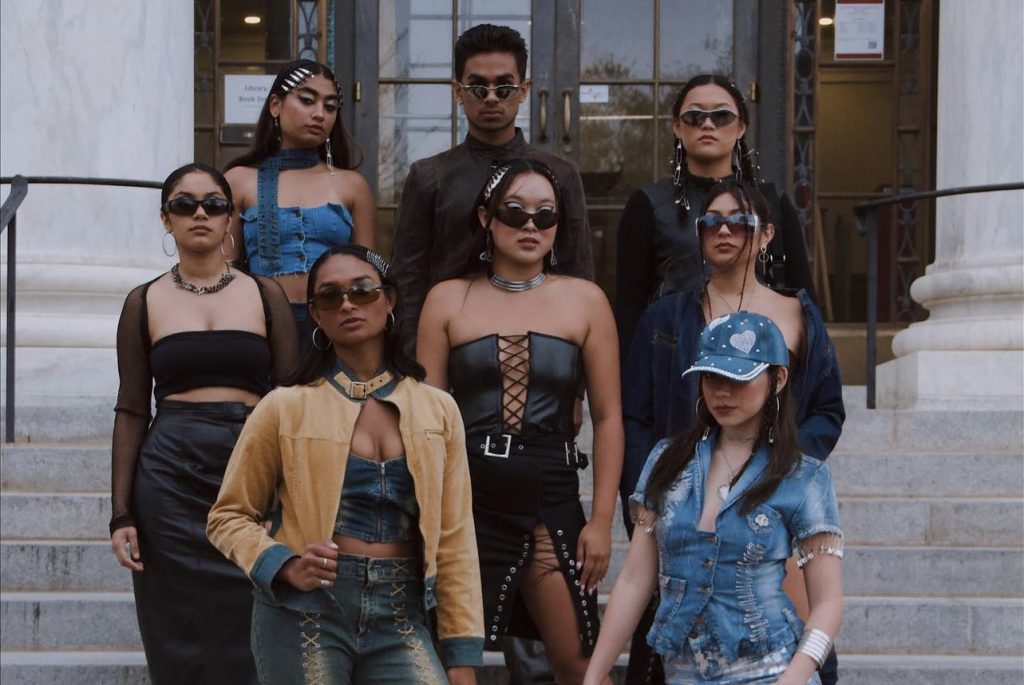Embracing sustainable fashion through trendy style bundles
Sustainably stylish with style bundles
Gen Z’s fashion forward individuals are curating and selling thrifted style bundles for individual aesthetics.

Twenty-two year old Kalita Hon stands with several hangers of thrifted clothing pieces in her hand and a smile. “Let’s do another style bundle breakdown,” she says. This is the way she starts her infamous TikToks, receiving thousands of views from users who are into the latest sustainable fashion trend — style bundles. Style bundles include thrifted pieces of clothing curated by social-media-savvy and fashion-forward entrepreneurs.
From clothing fads like streetwear to model-off-duty and grunge to Y2K, Hon can curate any of these styles from simply looking at someone’s Pinterest page and then thrifting for hours in an attempt to match specific clothing pieces to the chosen aesthetic. She then demonstrates this process in her “Style Bundle Breakdown” TikToks, which is the main way she promotes her business.
Style bundles are on the rise as sustainable fashion becomes more popular. According to Statista, the worldwide share of revenue in the sustainable apparel market has jumped from 3.62% in 2020 to 4.7% in 2023, and style bundles have been helping to fuel that growth.
“I always liked fashion itself, but seeing other people make style bundles and sharing love for sustainability made me want to create my own,” personal stylist Litzy Ramos said.
Twenty-four-year-old Ramos is another TikTok style bundle curator who considers herself to be the “local style bundle fairy.” Ramos uses the handle @glowithlitzy on TikTok and Instagram, where she has over 20,000 likes with her mermaid-core inspired thrifted style bundle, and 50,000 likes with her masc fairy grunge style bundle.
“There are some people that don’t know how to obtain the style that they want or they don’t have the time to thrift and carefully look through each piece of clothing, so they look to fast fashion companies to quickly get something that may be trending on social media,” Ramos said. “But, fast fashion is dangerous and predictable. So, others will turn to thrifted style bundles because they want something completely personalized for them that is also sustainable.”
Although the likes and views are what generate income for Ramos and Hon, both creators take responsibility for advocating for sustainable fashion to their followers. According to Solene Rauturier, style writer for goodonyou.eco, fast fashion’s negative impact includes its use of cheap, toxic textile dyes—making the fashion industry one of the largest polluters of clean water globally, along with agriculture. Style bundles can help offset that impact by keeping wearable, often desirable, clothing out of the waste stream.
Isabelle Collins, a Syracuse University fashion and design alumna, noted the importance of sustainable fashion. “Key elements include eco-friendly materials, ethical labor practices, transparency, reducing waste and challenging fast fashion,” Collins said. “It encourages consumers to make mindful choices and promotes innovation in the fashion industry.”
For Ramos, the process of creating style bundles is lengthy, but according to her, this process is important to ensure the customer’s satisfaction.
“When I receive an order, I ask the customer a lot of important questions before I go thrifting such as their sizes and their style,” Ramos said. “I then go thrifting several times over the course of several days to find items that match. I measure all the pieces and I double check the client’s Pinterest board to make sure. When I finish all of that, I let the client know, then I mail them the bundle.”
Hon has a similar process when creating her style bundles. She says knowing the customer’s aesthetic and matching it with hyper specific pieces of clothing is to key a perfect style bundle.
“I start off by writing a thrifting checklist of things that they would want and I write descriptions like ‘brown belt with a gold belt buckle,’” Hon said. “It has to be really specific, you can’t just write ‘white shirt.’ It has to be ‘white cropped tank top, size small.’” Hon also creates handmade jewelry pieces to accompany the outfits.
On the other hand, Max Haye, an 18-year-old Depop seller and style bundle buyer, agrees bundling is a sustainable practice, but he encourages consumers to be aware of potential downsides.
“The reason people turn to second-hand clothing is because it’s easier and safer for the planet, but you are still packing things and using plastic and printing out shipping labels,” Haye said. “But on the other hand, this is the most sustainable it’s going to get for now. It isn’t as sustainable as we’d like it to be, but it will definitely get the job done as we become more aware on how to shop for clothes sustainably.”
Style bundles appear to be just the tip of the iceberg in the different ways people can shop for clothes sustainably. Second-hand shopping online may not be the most sure way to end pollution in the environment, but according to experts, it is a step in the right direction. Through style bundles, people are still able to find clothes that are trending and fit their style, while still not contributing to the negative effects of fast fashion.
“Thrifting is just more affordable in every way,” Hon said. “This is a way for more people to sustainably consume fashion, and I want to promote that on my platforms. On my TikTok, I show that you can find full outfits at thrift stores in your aesthetic and in your sizes. It is not impossible.”
